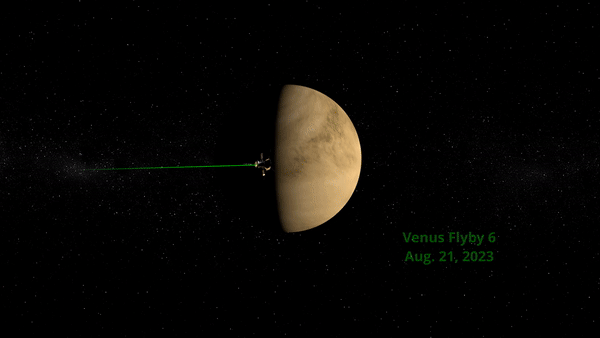NASA’s Parker Solar Probe continues to break records – records that were set by spacecraft in the past few years of exploration of the Sun. In its 17th close passage around our star, the spacecraft came as close to the Sun as 7.26 million kilometers (4.51 million miles) from the solar surface. That is about 10 times the radius of the Sun away from it.
As the spacecraft gets close to the Sun, its speed increases. It is falling down a gravitational well. At its closest approach, the spacecraft clocked a speed of 635,266 kilometers (394,736 miles) per hour, by far the fastest a human-made object has ever traveled.
The Perihelion, the closest approach an object has to the Sun, is the midpoint of the Solar Encounter. The 17th solar encounter for Parker Solar Probe took place from September 22 to October 23, with the perihelion taking place on September 27 at 7:28 p.m. EDT.

Parker Solar Probe’s 17th solar encounter was the closest yet.
Image Credit: NASA/Johns Hopkins APL/Steve Gribben
On October 1, the mission sent a stream of telemetry, and data collected in this interaction is going to be streamed to Earth until October 19. The data pertains to the solar wind, the stream of charged particles that are released by the Sun. The probe travels through the solar corona, the atmosphere of the Sun, a region of incredibly high temperatures, to study how the solar wind is produced by the Sun.
The spacecraft used the gravity of Venus to change its orbit, bringing it ever closer to the Sun. This was the sixth time the Parker Solar Probe managed to use the Venusian gravity well to shift the orbit. It flew past just short of 4,000 kilometers (2,500 miles) from the planet.
Parker will keep this orbit for its next four perihelions, going around the Sun every 92 days. It will encounter Venus again on November 6, 2024, with a flyby just 317 kilometers (197 miles) from its surface.
That passage will put it on an even shorter orbit, pushing it ever closer to the Sun and at an even faster speed. But that won’t happen until Christmas Eve 2024. Parker is a sturdy little spacecraft – not only does it survive the corona, but it has survived even getting caught in the explosive releases of plasma known as coronal mass ejections.
Source Link: Solar Probe Storms New Record For Fastest Object Made By Humans Ever